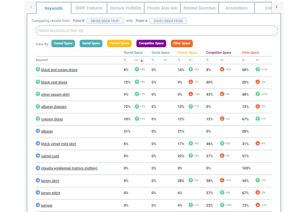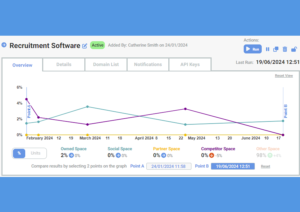If you’re an agency looking to win a new client, or you’re in an SEO team that needs to secure more budget to get a better advantage over your company’s competition, it can be difficult to persuade those with the purse strings to part with the budget. SEO is often seen as too complex to understand, too slow to bring results. Teams need to be able to evidence the problem with a brand’s current search landscape, with visual aids and time-series data that points to trends and changes.
It can take a lot of preparation to pitch for a new client or for additional budget. Traditional SEO tools focus on keyword position, and whilst some clients might get excited at the prospect of moving from position 200 to position 75, that’s still unlikely to move the needle much in terms of revenue because they’ll still be way off page one.
Better is to pitch a strategy that’s around page one visibility. Knowing what Google is already showing in the SERPs for the keywords you want to optimise for, you can first focus on the top 100 most commercially beneficial keywords with an aim to secure a space on page one, but not necessarily the organic search position #1 (which is what almost all other tools focus on). You can pitch with the knowledge that actually Google prioritises the question boxes for keyword A, or a video at the top of the page for keyword B, or images for keyword C, and make appropriate recommendations for the client’s SEO strategy as a result.
With a tool like SERPsketch, you can run a campaign on any keyword, for any domain. There’s no code to install on a website, no complicated setup processes. All you need to do is add 50-100 of the keywords that are commercially important for the prospective client, add the owned domain (and any partners or competitors if desired) and schedule the campaign to run at whichever regularity you require.
If you were pitching for a new client in a month’s time, you might run the campaign once or twice a week to build up a reasonable amount of data to show trends and changes in the SERP. Or if you have less time to prepare, you could run it daily.
SERPsketch displays SERP data in a visual way and it’s easy to screen grab relevant data to use in pitch decks.
Tracking share of SERPs over time
The first graph you see is an overview of space owned by each type of domain (owned, owned social, partner and competitor, with Other space toggled off by default as it usually represents the biggest number and so skews the graph when toggled on).
From this graph you see the changes in share plotted over time, at whichever frequency you selected in the campaign set up. It’s a useful graph to spot any significant changes e.g. where owned space has grown, perhaps at the expense of competitor or partner space.
You can also choose two date points on the graph which then changes the views of the more detailed data in SERPsketch. The detailed reports show a comparison between two dates selected on the overview.
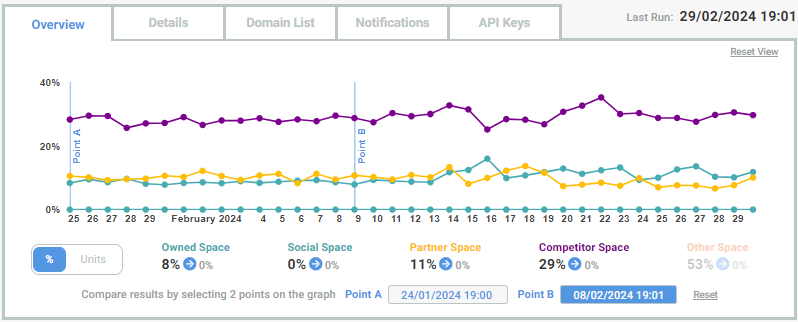
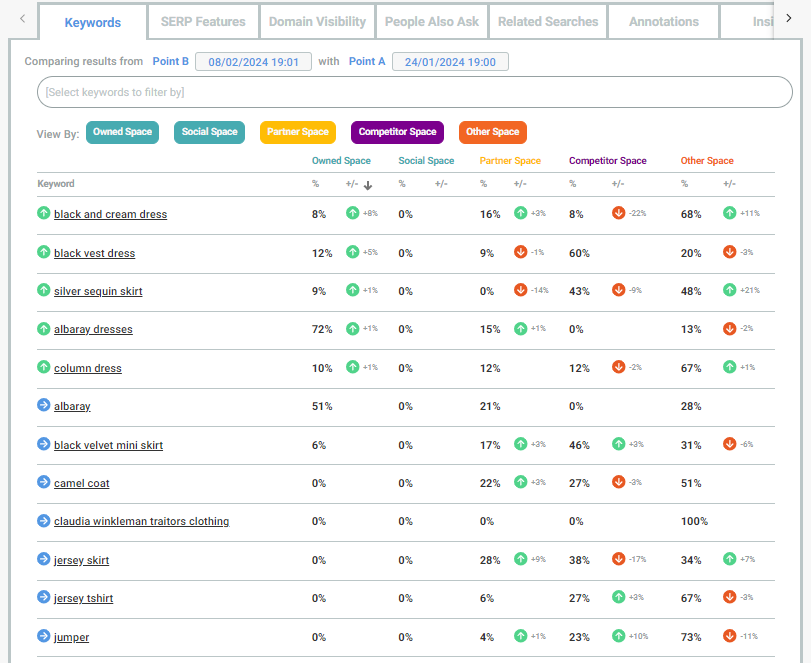
You can click on an individual keyword and view a visualisation of Google page one for that keyword, understanding the features that Google would display. And you can compare two dates as well. So if you’re preparing a pitch, you can demonstrate changes in the SERP for one or two very important keywords and how you’ve identified areas that need to be looked into.
Here’s an example for a clothing brand called Albaray. Some of their clothes were worn by Claudia Winkleman in the popular tv programme “The Traitors”. On the left, a sketch for the keyword “black velvet miniskirt”. On the right the same sketch but around 2 weeks later. They’ve gained space on page one by adding shopping ads. One might deduce that they added shopping ads because they felt that they would give a return on investment during this time because of The Traitors.
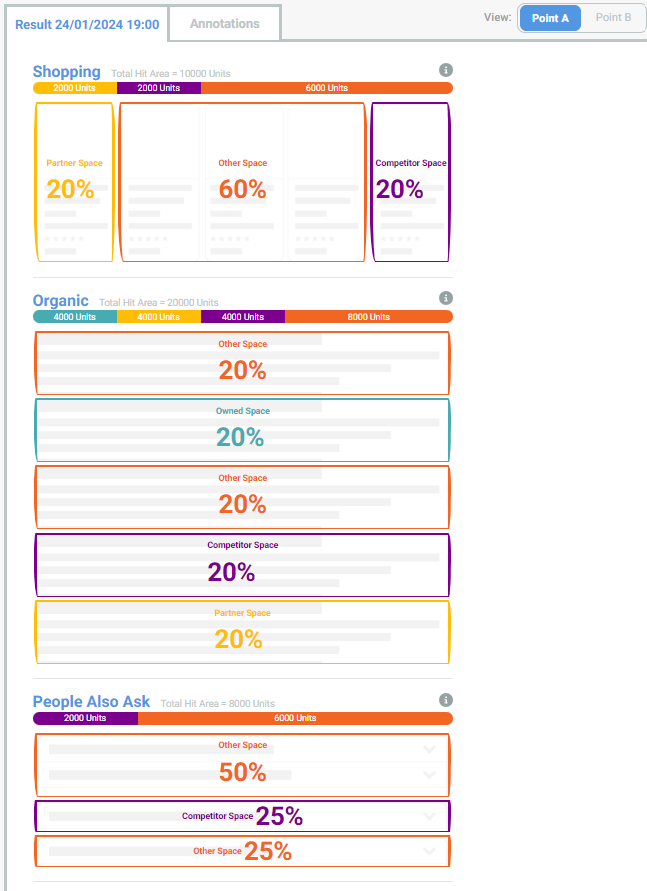
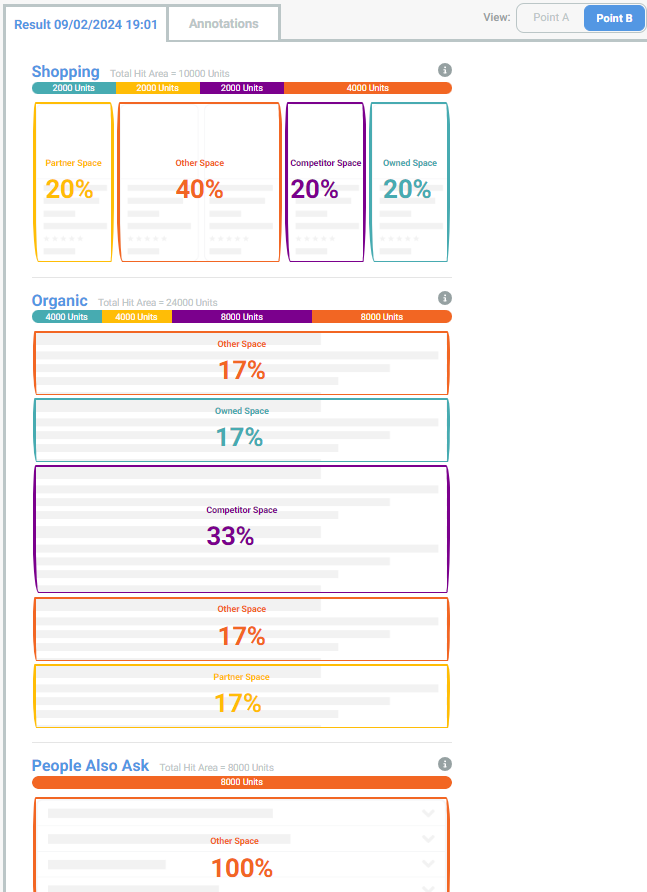
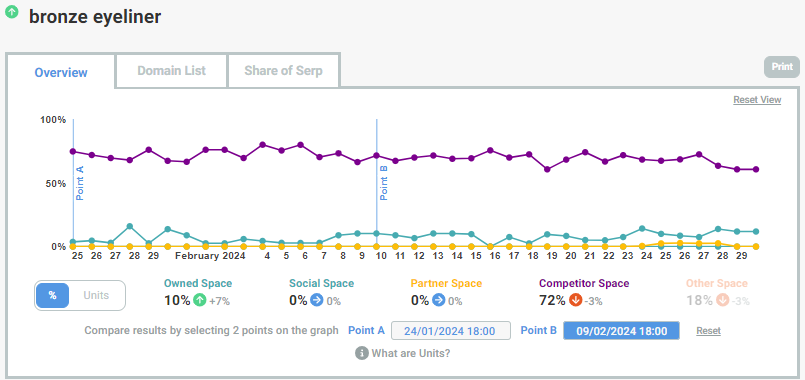
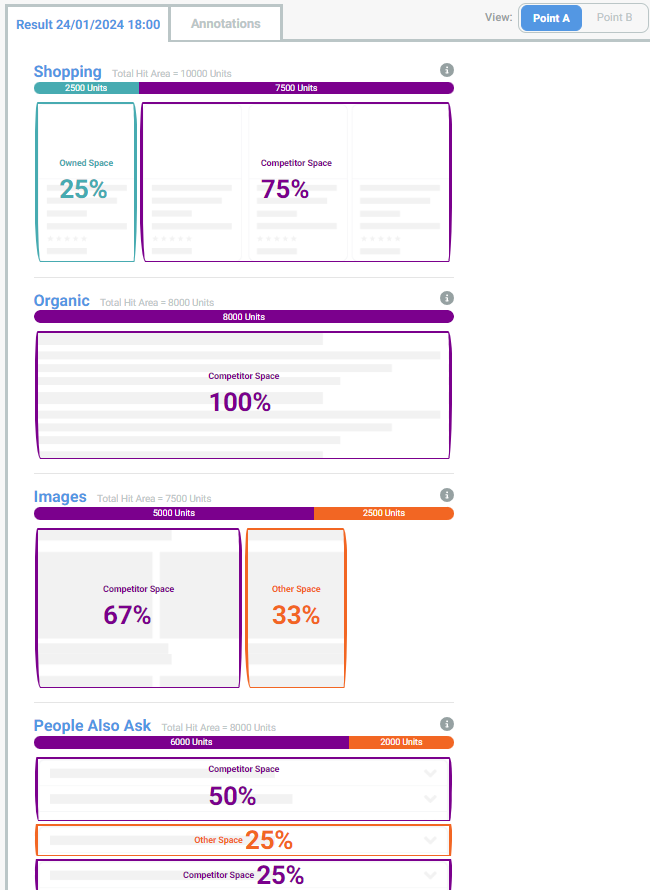
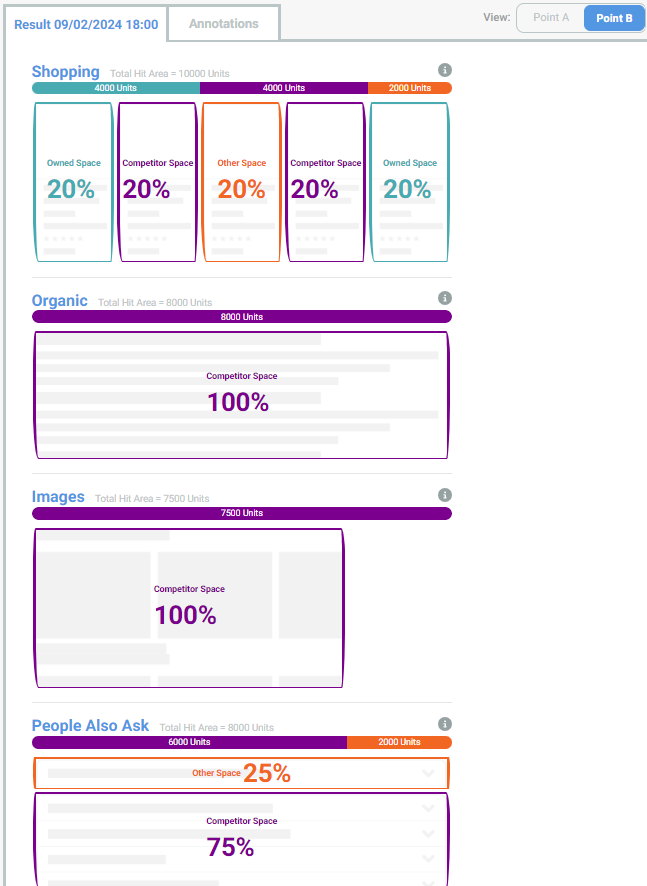
We can toggle the view to see URLs and understand exactly what those shopping ads are for, and here’s something you might call out in a pitch. Though this is the keyword “bronze eyeliner” – we can see there’s an ad for a wondercolour creamshadow in wild violet colour.
Now, this could be a very deep understanding of customers’ shopping habits, knowing that these colours are often bought together. Or that those choosing to wear Bronze eyeliner might also suit violet eyeshadow. Or, it could be an error in the PPC strategy. Whatever the reason, you can demonstrate that as an agency you’ll be looking at all of the SERP, not just organic results, to ensure the prospective client doesn’t compete with themselves between shopping/ppc and SEO.
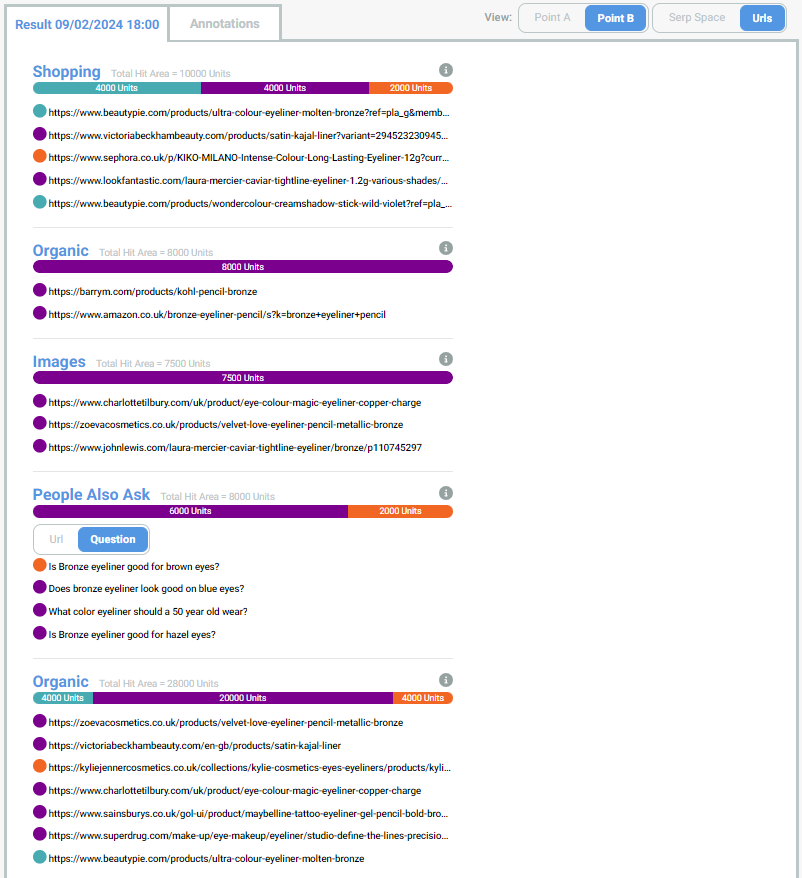
SERP features
We’ve already seen that SERPsketch captures a view of the SERP features for individual keywords, but it also rolls that up into a keyword set view.
In this view you see the features that dominate for the keyword set and can easily identify areas that need improvement.
So in the below example we can see that across the keyword set, organic search represents half the space on the SERPs but the owned domain (in teal green) only owns a small proportion of that space compared to competitors and others (purple and orange respectively).
It’s typical that organic search would take up the majority of space so then when preparing your pitch you might look into the other areas of interest and highlight those.
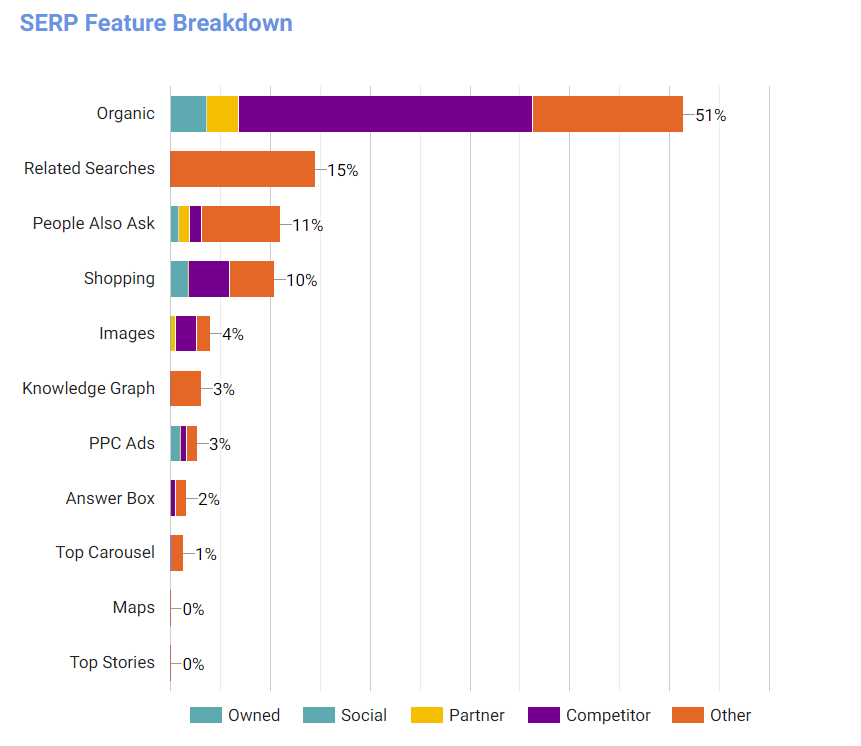
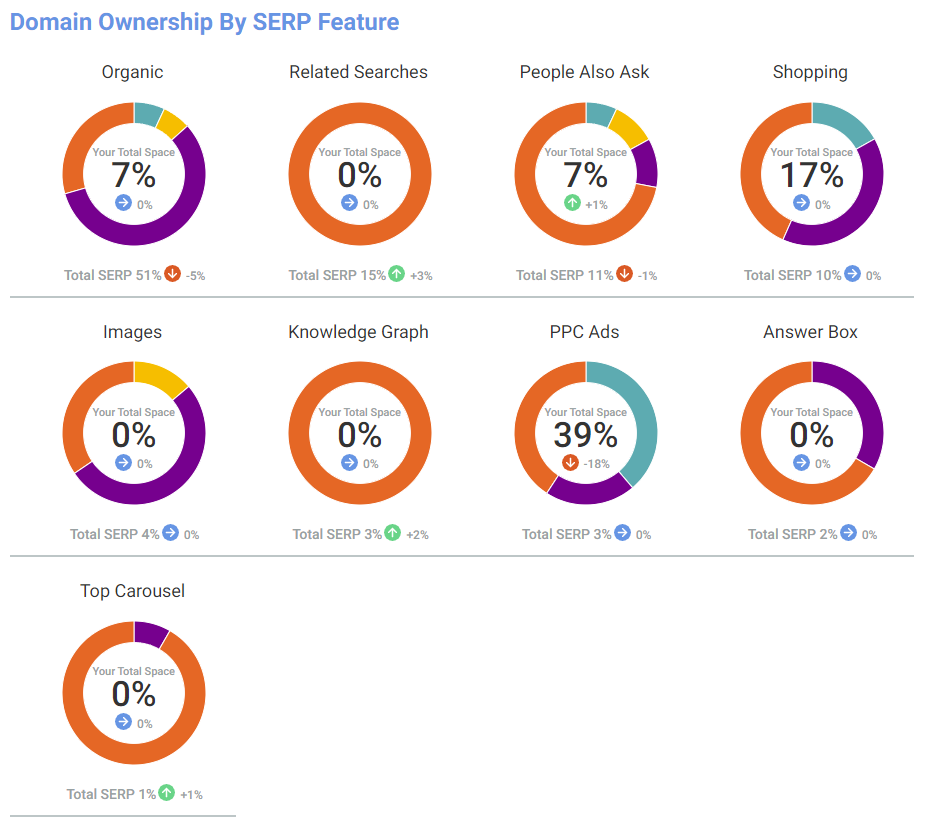
People Also Ask
As mentioned earlier, SERPsketch has a People Also Ask tab which shows you all of the Questions that have appeared in the People Also Ask boxes in Google search results for the keyword set in the campaign.
You can see which keywords the domain already owns and see where there are opportunities to win. In this example, the questions that the domain owns are about its brand. So in this example, Albaray owns mainly questions related to its brand, though it does also own one about matching tops with a silver sequin skirt. But there are lots of other questions that give ideas for content that Albaray could create to answer those additional questions.
In a pitch, you can use the People Also Ask tab in SERPsketch to propose a content plan for winning space on page one.
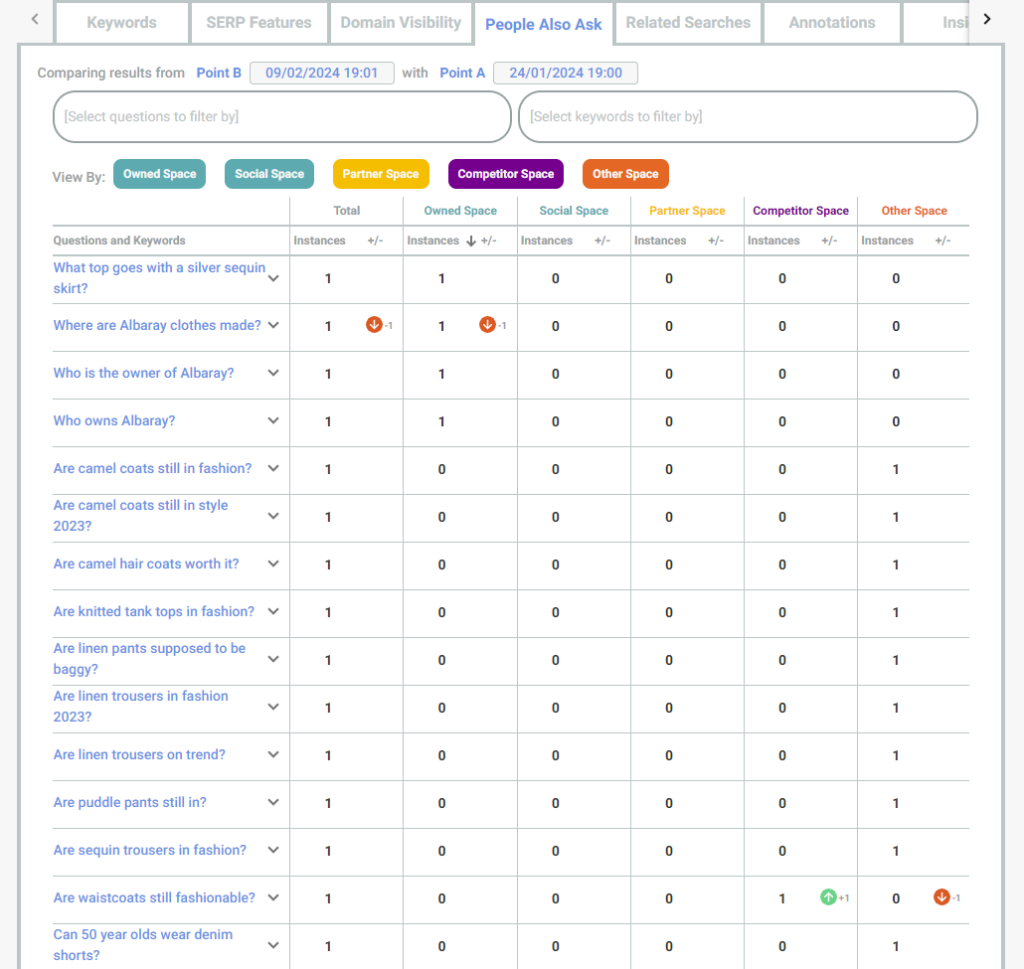
Domain visibility
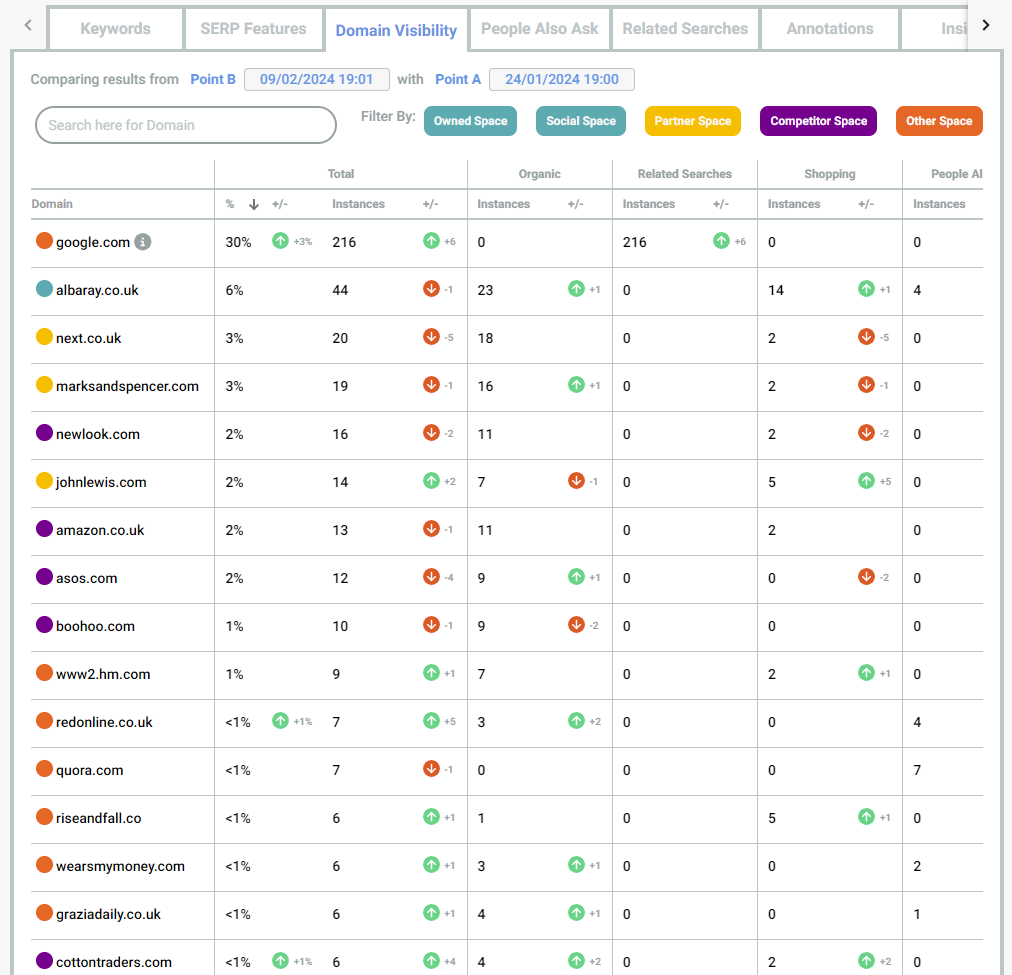
With a month’s free trial, it’s easy to add SERPsketch into your next pitch process. There are no limitations on the number of campaigns you can set up, though you will be limited on keywords and frequency – so be mindful to choose only the most commercially important keywords.
You can export all the data into a CSV to analyse further, or import it into LookerStudio.
It’s easy to extract the graphics in SERPsketch to use in presentation decks. The charts are designed to make SEO as clear and understandable as possible for stakeholders to take on board the importance of investing in search marketing.


